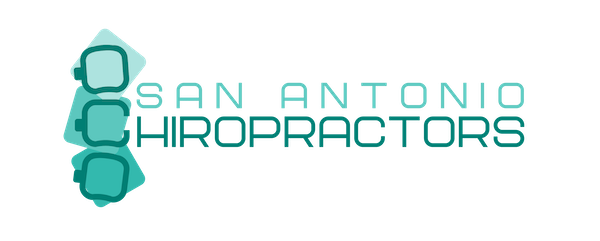
Effective Relief Strategies
Sciatica is a condition characterized by pain radiating along the path of the sciatic nerve, which extends from the lower back through the hips and buttocks and down each leg. Typically, sciatica affects only one side of the body and can cause discomfort that ranges from mild aches to sharp, burning sensations or excruciating pain. Additionally, it may result in numbness, tingling, or muscle weakness in the affected leg or foot. For many individuals dealing with this condition, chiropractic care offers a viable option for non-surgical treatment.
Chiropractic treatment for sciatica is focused on restoring spinal movement, improving function, and supporting the body’s innate ability to heal itself. Through a series of spinal adjustments aimed at reducing the nerve irritability responsible for inflammation, pain, and other sciatic symptoms, chiropractors work to alleviate the pressure on the sciatic nerve. The specific chiropractic techniques implemented depend on the cause of the patient’s sciatica, as a thorough examination helps to tailor the treatment to each individual’s unique situation.
The philosophy behind chiropractic care for sciatica is grounded in its holistic approach, targeting not just the symptoms but the root cause of the pain. The use of hands-on spinal manipulation and other alternative treatments has shown benefits for many sciatica sufferers. These treatments may include methods such as ultrasound therapy, ice/cold therapy, and transcutaneous electrical nerve stimulation (TENS). By providing a natural and non-invasive therapy option, chiropractic care can be an integral part of a comprehensive sciatic pain relief strategy.
Understanding Sciatica and Its Causes
Sciatica is characterized by pain that radiates along the path of the sciatic nerve, which begins in the lower back and extends through the hips, buttocks, and down each leg. Pinpointing the root causes is crucial for effective treatment strategies.
Anatomy of the Sciatic Nerve
The sciatic nerve is the longest and largest nerve in the body, originating from nerve roots in the lumbar spinal cord in the lower back and extending through the buttocks area down to the lower limbs. It’s responsible for connecting the spinal cord with the leg and foot muscles.
Common Causes of Sciatica
Sciatic nerve compression or inflammation usually results in the pain known as sciatica. The most frequent cause is a herniated disc that presses against the nerve. Additional causes include:
- Spinal stenosis: The narrowing of the spinal canal that may pinch the nerve.
- Bone spur: Bony overgrowths on the vertebrae can also impinge on sciatic nerve pathways.
- Nerve compression can occur due to an injury or a condition such as a tumor.
Prompt management of these conditions is paramount to alleviate the pain and prevent further nerve damage.
Chiropractic Treatment Techniques
Chiropractic care focuses on the musculoskeletal and nervous systems, aiming to relieve pain and improve functional abilities. This section outlines specific chiropractic treatment techniques that are widely used for addressing sciatica symptoms.
Spinal Manipulation
Chiropractors employ spinal manipulation to restore joint mobility. The procedure, also known as chiropractic adjustments, involves applying controlled force to joints that have become restricted in their movement as a result of tissue injury. Designed to alleviate pain and improve functional ability, spinal manipulation may be beneficial for those experiencing sciatic discomfort by potentially reducing nerve irritability responsible for inflammation, pain, and muscle spasms.
Manual Therapy
Manual therapy is a critical facet of chiropractic care for sciatica, encompassing hands-on techniques to manipulate muscles and joints. This includes massage to reduce muscle tension and stretching exercises to enhance mobility. In certain cases, chiropractic manual therapy can involve specific exercise protocols to strengthen the spinal musculature, ultimately promoting spinal health and reducing the recurrence of symptoms.
Adjunctive Therapies
Chiropractors may also integrate adjunctive therapies into their treatment regimens, such as TENS (transcutaneous electrical nerve stimulation), acupuncture, or yoga to complement spinal adjustments and manual therapy. These therapies are aimed at providing a holistic healing approach, further empowering patients in their journey towards recovery. The application of adjunctive modalities is typically guided by an individualized treatment plan and might be combined with recommendations from the National Institutes of Health on conservative treatments, including physical therapy as a cooperative approach to managing sciatica.
Non-Invasive Sciatica Management
Non-invasive sciatica management focuses on methods that do not require surgical intervention, emphasizing the importance of activity modification, physical therapy, and ergonomic adjustments to manage pain effectively and improve overall spinal health.
Exercise and Movement
Engaging in a targeted exercise regimen is crucial for effective pain management of sciatica. Stretches and strengthening exercises are designed to improve mobility and support the structures surrounding the spine. For instance, the pelvic tilt and knee-to-chest stretches can alleviate pressure on the sciatic nerve. Chiropractic care, outlined as a non-invasive option, often incorporates specific movements to restore functional range of motion and reduce sciatic discomfort.
- Stretches: To maintain flexibility and reduce nerve compression.
- Pelvic Tilt
- Knee-to-Chest Stretch
- Strength Exercises: To support the spine and lower back.
- Core Strengthening
- Lower Back Stabilization
Lifestyle and Ergonomics
Modifications in lifestyle and ergonomic practices play a substantial role in preventing sciatica and maintaining quality of life. Proper posture is paramount, both in static positions like sitting and during dynamic movements. Educational resources provided by chiropractors about ergonomic workstations can mitigate risk factors associated with sciatica. Adjustments may include ergonomic chairs and desks at proper heights to facilitate neutral spine positions. Nutrition also contributes to overall spinal health, where a balanced diet supports tissue healing and inflammatory control.
- Ergonomic Workplace Setup: Aligning work environments to reduce strain.
- Ergonomic Chairs
- Desk Heights
- Lifestyle Changes for Prevention:
- Regular Breaks to Increase Movement
- Balanced Nutrition
Diagnostic and Monitoring Strategies
To effectively manage sciatica, chiropractors utilize precise diagnostic tools and monitor patients’ progress meticulously. Accurate diagnosis informs treatment strategies, while ongoing assessment ensures adjustments are targeted and effective.
Imaging and Examination
Imaging Techniques: Healthcare professionals typically employ diagnostic imaging techniques such as X-rays and MRI scans to evaluate the underlying cause of sciatica. These imaging modalities are instrumental in visualizing bone structures and soft tissues respectively, thus aiding in the diagnosis of conditions linked to sciatica.
- X-ray: Utilized primarily to rule out bone-related causes of low back and radiating leg pain.
- MRI: Offers detailed images of soft tissues including intervertebral discs and nerves.
Physical Examination: The first step in a chiropractic consultation often involves a thorough examination where symptoms and medical history are reviewed. Physical therapists and chiropractors may test range of motion, muscle strength, and reflexes to identify the source of low back pain and radiating leg pain.
- Symptom Evaluation: Chronic pain levels, frequency, and patterns including the nature of radiating pain are carefully documented.
- Diagnostic Tests: Specific maneuvers, such as the straight leg raise, may be performed to elicit sciatic pain and confirm diagnosis.
Evaluating Treatment Progress
Treatment Monitoring: Following an initial diagnosis, chiropractic care for sciatica involves regular monitoring to assess the effectiveness of treatments such as chiropractic adjustments.
- Reassessment: Practitioners often reassess symptoms and may use repeat diagnostic imaging if necessary to gauge the progress of low back pain and sciatica.
- Adjustments to Treatment: They review improvement in function and pain relief to tailor subsequent chiropractic adjustments or recommend allied therapies.
Outcome Measures:
- Patient-reported Outcomes: These include self-assessed pain levels and functional questionnaires.
- Objective Measures: Healthcare professionals may use physical performance tests to objectively measure improvements.


